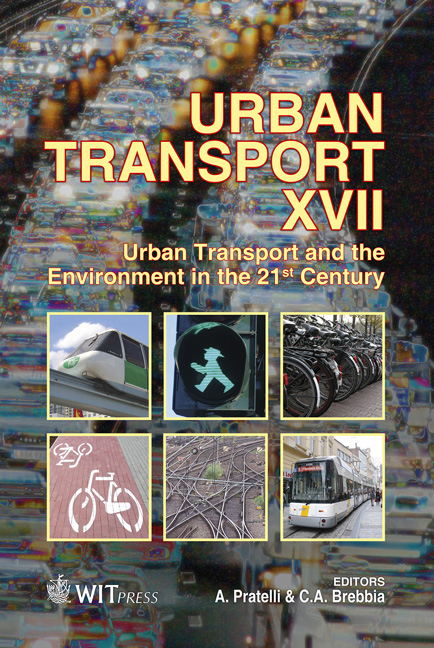Testing For A Large Roundabouts Capacity Model: Experimental Comparisons Between Italy And Bahrain
Price
Free (open access)
Transaction
Volume
116
Pages
13
Page Range
3 - 15
Published
2011
Size
3,396 kb
Paper DOI
10.2495/UT110011
Copyright
WIT Press
Author(s)
A. Pratelli & H. M. N. Al-Madani
Abstract
It is well-known that the maximum traffic flow that a roundabout entry is able to accommodate depends on the amount of flow circulating in the roundabout carriageway that conflicts with the entry flow exiting from it and strictly related to the geometric characteristics of the roundabout. International guidelines deal with various capacity models requiring different input data and often lead to different results for the same roundabout entry. Recently, an exponential model has been developed for capacity estimates of multi-lane roundabout entries under different conditions of circulating flow and geometrical factors. Such a model was validated by Al-Madani and Saad on data gathered from a sample of existing large roundabouts in Bahrain. Calculations made, applying the developed model, or BAHR model, showed a reasonable fitting to computational data obtained from different international models, as German, French SETRA, American HCM, and so on. In this paper, we have collected traffic data during peaks or congested periods and measured geometry parameters on twelve large roundabouts located in Tuscany, Italy. The main goal was with a view to testing if the BAHR model could be well suited or not to Italian context. The same previous methodology applied for the BAHR model was followed and found a new exponential entry capacity model, called TUSC. Statistical tests are performed and the paper ends with some comments about the obtained results. Keywords: roundabout capacity, linear regression and exponential entry capacity models, statistical significance.
Keywords
roundabout capacity, linear regression and exponential entrycapacity models, statistical significance





